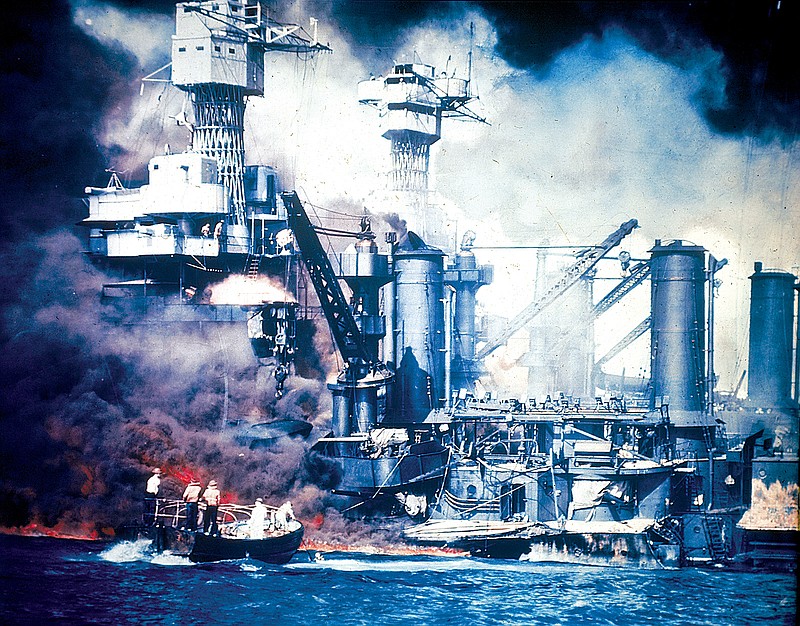Early on a Sunday morning in 1932, a fleet of some 150 fighters, dive-bombers and torpedo planes struck the naval base at Pearl Harbor. The ships lying at anchor on Battleship Row sustained direct hits. Also hit were the base's fuel storage tanks and the Army Air Corps planes parked nearby at Hickam Field.
The surprise was as complete as it was devastating. Only this was an Army-Navy war game, the attackers were American pilots operating from the carriers Saratoga and Lexington, and the bombs they dropped were sacks of flour.
The lesson of "Grand Joint Exercise 4," as it was called, is that forewarned is not always forearmed. It took the actual sinking of much of the U.S. battle fleet nearly a decade later to bring the lesson home to U.S. military planners that the age of the carrier had arrived.
Fast forward to 2006, when a small Chinese diesel-electric submarine surfaced well within torpedo-firing range from the 80,000-ton Kitty Hawk, having gone undetected by the carrier and her escorts. That incident ought to have been a loud wake-up call to the Navy that the age of the supercarrier is drawing to a close just as surely as the age of the battleship was coming to an end by the 1930s.
The only question is whether we will learn the lesson for ourselves, or - as we did Dec. 7, 1941 - have an adversary teach it to us.
The question is also at the heart of an incisive and important essay in the forthcoming issue of Foreign Affairs by Christian Brose, the former staff director of the Senate Armed Services Committee.
"The traditional model of U.S. military power is being disrupted, the way Blockbuster's business model was amid the rise of Amazon and Netflix," Brose writes. "A military made up of small numbers of large, expensive, heavily manned, and hard-to-replace systems will not survive on future battlefields, where swarms of intelligent machines will deliver violence at a greater volume and higher velocity than ever before."
The logic here is the same as the one that decided the Battle of Agincourt, where the humble and effective English longbow made short work of the expensive and vulnerable French cavalry. Today's version of that cavalry consists of aircraft carriers priced at $13 billion apiece and fighter jets that go for $90 million (and cost $30,000 an hour to fly).
These systems are all beset by the usual technological hurdles, cost overruns and bureaucratic pitfalls. Still, they'd be worth their enormous price if they conferred a long-term, decisive edge over our adversaries, as U.S. technological superiority over the Soviets did during the Cold War.
The problem is that they no longer do. On the one hand, we are burning through billions of dollars by deploying state-of-the-art resources against technologically primitive enemies in the Middle East and Africa.
On the other hand, we are burning through trillions to build a relatively small number of ultrasophisticated platforms that are increasingly vulnerable to detection and destruction by near-peer adversaries like China and Russia.
That's a recipe for strategic failure on budgetary grounds alone.
The answer, Brose argues, is to radically increase the numbers of military platforms, lower their costs and - within ethical limits - enhance their autonomy. This puts fewer war fighters in harm's way, creates more (and more difficult) targets for an enemy to track, and makes the loss of any one of them far easier to bear.
It doesn't have to be this way. A Pentagon with a visionary and independent leader, a Congress ruled by a non-parochial and bipartisan spirit, and a serious president capable of long-term thinking could change the way America prepares for the next war - to prevent it if possible, to win it if necessary.
For that, we'll have to wait for a future administration. In the meantime, the risk of being on the losing side of our own Agincourt grows.
The New York Times
